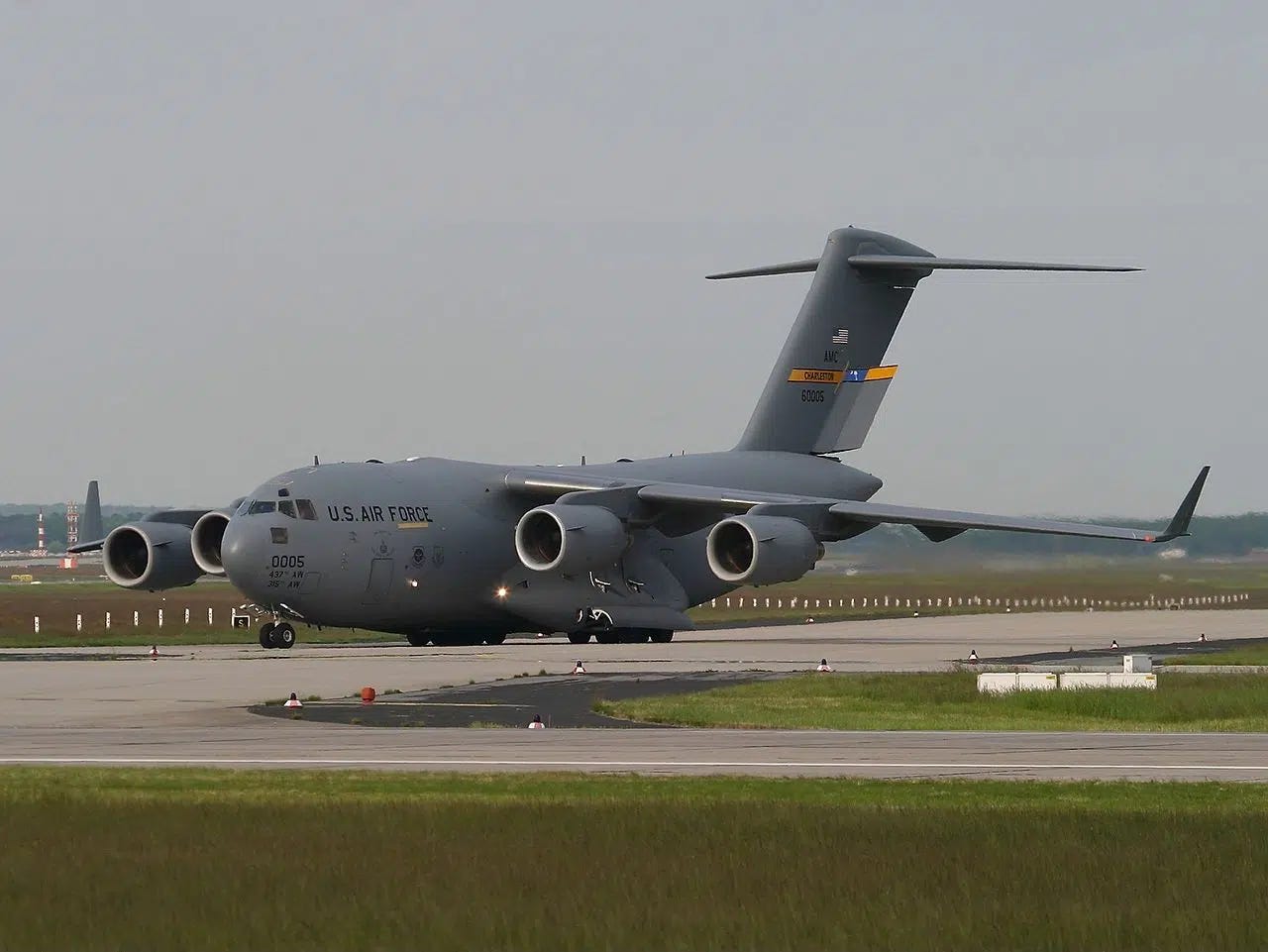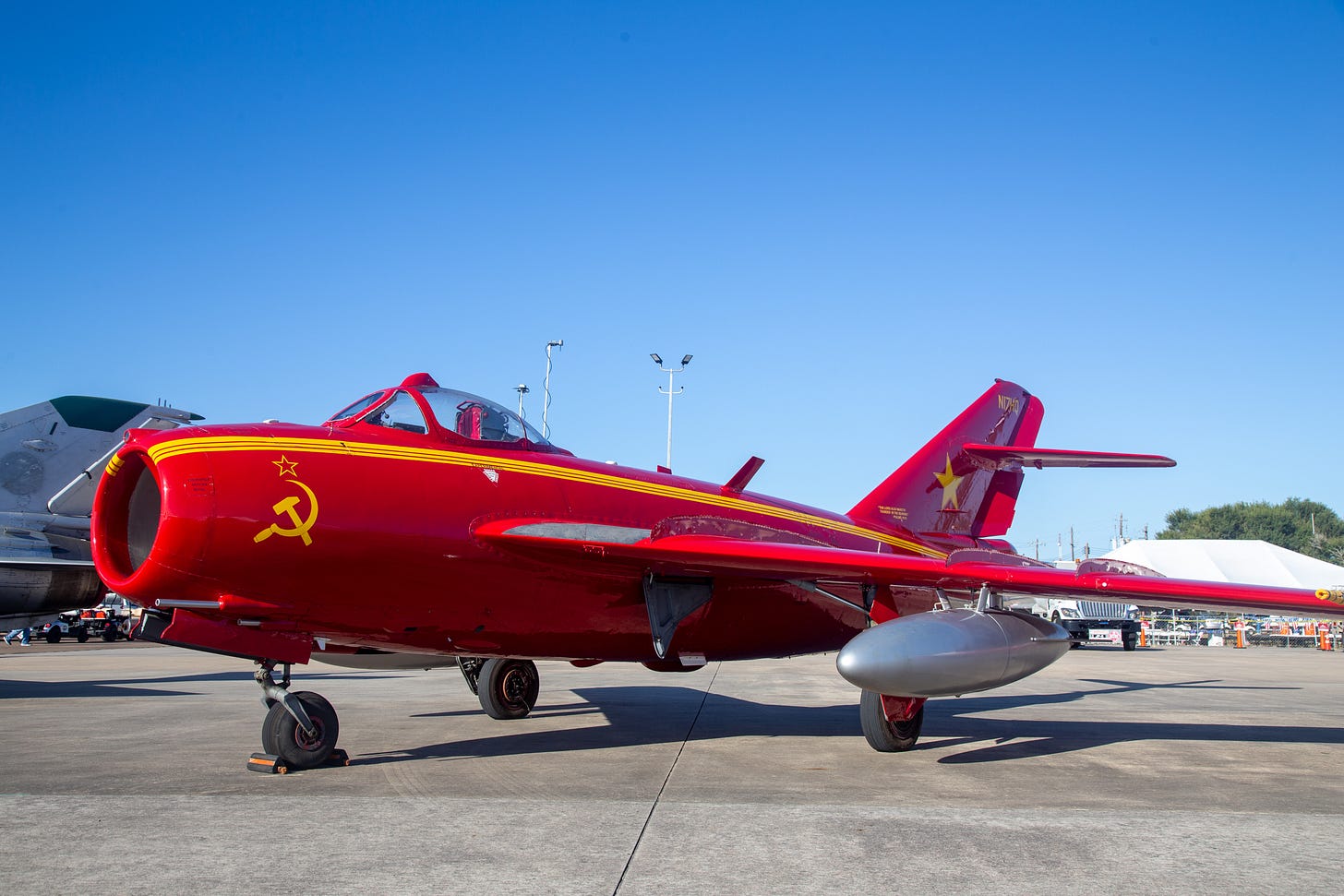NGAD Engines and looking back on a Medal of Honor winner
Two engine manufacturers compete for the NGAD and remembering a brave Air Force crewman
“A fighter pilot sees not a cloud but beauty. Not the ground but something remote from him, something that he doesn't belong to as long as he is airborne. He's a man who wants to be second-best to no one.”
— Brig. Gen. Robin Olds, USAF.
Mission Briefing:
The Next Generation Air Dominance (NGAD) program—poised to define the future of air superiority—has reached a crucial milestone. The two cutting-edge engines proposed to power the U.S. Air Force’s highly classified sixth-generation fighter have successfully passed their detailed design reviews.
The GE Aerospace XA102 and Pratt & Whitney XA103, developed under the Next Generation Adaptive Propulsion (NGAP) program, are now moving into prototype production. These next-gen engines promise unprecedented adaptability, range, and thermal management capabilities—critical for an aircraft designed to dominate in contested airspace against near-peer adversaries like China and Russia.
A New Era in Fighter Jet Propulsion
At the heart of these engines is adaptive cycle technology, a game-changing innovation that allows the engine to seamlessly shift between different airflow modes to optimize thrust, fuel efficiency, and cooling capacity based on mission demands. Unlike traditional fighter jet engines, which operate with fixed airflow settings, these adaptive engines can "breathe" differently depending on the situation:
High-speed engagements: Increased thrust for supersonic performance.
Extended-range missions: Better fuel efficiency for deep-penetration strikes.
Advanced electronic warfare operations: Enhanced thermal management to handle the power demands of next-gen avionics, sensors, and directed energy weapons.
This technology was initially considered for the F-35 Lightning II, but due to cost concerns and integration challenges across multiple F-35 variants, the Pentagon opted instead to upgrade the existing Pratt & Whitney F135 engine. However, for NGAD—where stealth, speed, and endurance are mission-critical—adaptive propulsion is a necessity, not an option.
Digital Design Revolution
Both GE Aerospace and Pratt & Whitney have leveraged state-of-the-art digital engineering techniques to accelerate development and testing:
Pratt & Whitney (RTX Subsidiary): The company used a “collaborative digital environment” to transmit engineering data for the XA103, enabling seamless review and verification. This approach streamlines development, helping to avoid costly redesigns later in the process.
GE Aerospace: The XA102 engine program is embracing model-based systems engineering, a transformative method that allows for simulated testing and real-time analysis before physical prototypes are even built. GE calls this a “paradigm shift” in propulsion design, promising faster iteration cycles and improved reliability.
With these advancements, both companies are now moving into hardware procurement and prototype assembly. Pratt & Whitney anticipates its first engine test by the end of the decade.
NGAD: A Fighter on Hold?
Despite the progress in engine development, the future of NGAD itself remains uncertain. The program was designed to field a next-generation crewed fighter as part of a larger "family of systems," which includes unmanned wingmen, advanced sensors, and networked combat capabilities. However, in mid-2023, the Air Force paused the NGAD acquisition process due to skyrocketing costs.
Originally, the NGAD jet was expected to be fielded in the 2030s, but budget concerns and shifting strategic priorities have led the Pentagon to explore cost-effective alternatives to achieving air dominance. The upcoming 2024 U.S. presidential election will likely determine the program’s fate. Former Air Force Secretary Frank Kendall deferred the final NGAD decision to the next administration, though internal studies continue to emphasize its necessity for future air warfare.
The Bigger Picture: F-35 and F-22 Support
While NGAD's future is debated, Pratt & Whitney remains busy supporting current-generation airpower. The company recently secured:
A $186 million contract to sustain F-35 F135 engines, ensuring depot maintenance and long-term operational readiness.
A three-year, $1.5 billion contract to maintain and upgrade the F119 engines that power the F-22 Raptor. This will help extend the life of the world’s first fifth-generation fighter, keeping it relevant until NGAD (or an alternative) arrives.
Conclusion
The road to the sixth-generation fighter era is anything but smooth, but the advancement of the XA102 and XA103 adaptive engines marks a significant leap forward. Whether NGAD materializes in its original form or evolves into a more cost-conscious alternative, one thing is clear—the future of air dominance will be shaped by the propulsion breakthroughs being developed today.
Stay tuned as we continue to track the evolution of NGAD and the technologies that will define the next generation of aerial warfare.
This Week in Aviation History
24 February 1969: during a nighttime mission over Long Binh Army Post in Vietnam, Airman First Class John Lee Levitow displayed extraordinary heroism that would earn him the Medal of Honor. Serving as a loadmaster aboard an AC-47 "Spooky" gunship, Levitow's aircraft was struck by a hostile mortar round, resulting in a two-foot hole in the wing and over 3,500 shrapnel punctures throughout the fuselage. The explosion wounded all occupants of the cargo compartment, rendering them momentarily helpless.
Amid the chaos, an activated flare intended to illuminate enemy positions was dislodged and began rolling dangerously inside the aircraft. Despite suffering more than 40 shrapnel wounds to his back and legs, and being dazed by the blast, Levitow recognized the imminent peril the flare posed. With complete disregard for his own safety, he crawled through the blood-slicked floor, threw himself upon the flare, and, clutching it to his body, managed to hurl it through the open cargo door just as it ignited. His swift and selfless action prevented a catastrophic in-flight fire and saved the lives of his fellow crewmembers.
This mission marked Levitow's 181st combat sortie. For his valor, President Richard Nixon awarded him the Medal of Honor on May 14, 1970, in a ceremony at the White House. Levitow's legacy endures; in January 1998, a McDonnell Douglas C-17A Globemaster III was named "The Spirit of Sgt. John L. Levitow" in his honor. He passed away on November 8, 2000, in Rocky Hill, Connecticut, but his courageous actions continue to inspire generations of airmen.
John Lee Levitow was born on November 1, 1945, in Hartford, Connecticut, as the first of two children to Lee Tobias Levitow and Marion V. Winialski Levitow. He grew up in Hartford and attended Glastonbury High School, graduating in 1965. With an early interest in engineering and technical work, he continued his education at the Porter School of Engineering and Design in Hartford before answering the call to serve his country.
Levitow enlisted in the United States Air Force on June 6, 1966, and completed his basic military training at Lackland Air Force Base, Texas. Initially trained as a power line specialist, he later cross-trained as an aircraft loadmaster, a role that placed him aboard AC-47 "Spooky" gunships during the Vietnam War. He was assigned to the 3rd Special Operations Squadron, where he quickly became an integral part of the crew. By the time of his heroic actions on February 24, 1969, he had already completed an astonishing 181 combat missions.
Just months after the fateful mission, on July 19, 1969, Levitow married Barbara Ann Corbeil at St. Augustine’s Church in Glastonbury, Connecticut. The couple settled near Norton Air Force Base in Southern California and had two children together before eventually divorcing.
Levitow’s legacy endures not only through his courageous actions but also through lasting tributes in his honor. In January 1998, the U.S. Air Force named a McDonnell Douglas C-17A Globemaster III, tail number 96-0005, The Spirit of Sgt. John L. Levitow. His name and story continue to inspire generations of airmen, exemplifying the selfless sacrifice and dedication that define the United States Air Force's core values.
In Case You Missed It
Lots of cuts going on these days - what about the F-35?
Photo Outlet
Every issue of Hangar Flying with Tog gets you a free image that I’ve taken at airshows:
Feel free to use these photos however you like, if you choose to tag me, I am @pilotphotog on all social platforms. Thanks!
Post Flight Debrief
Want to keep getting this newsletter straight to your inbox? Just sign up using the form below—it's that easy! This newsletter will always be free for everyone, but if you’d like to support the mission and unlock even more, consider becoming a paid subscriber. Either way, I’m grateful for your support. Sign up now and stay in the loop!
-Tog







